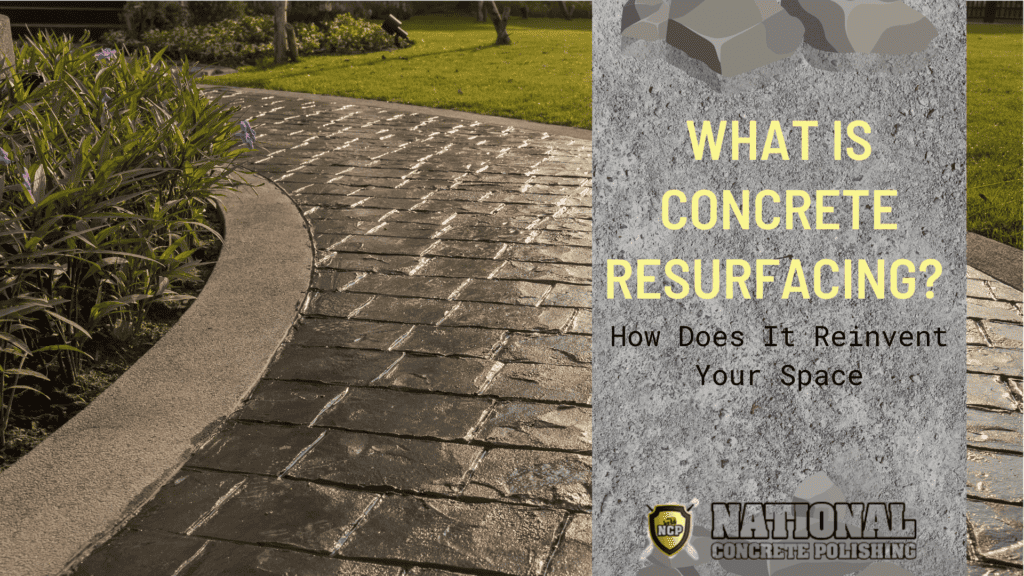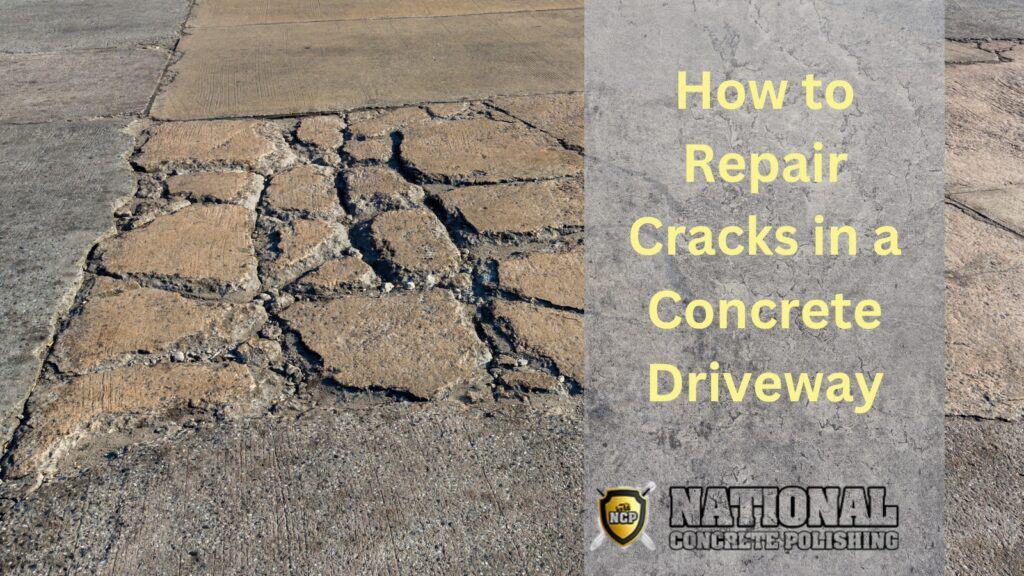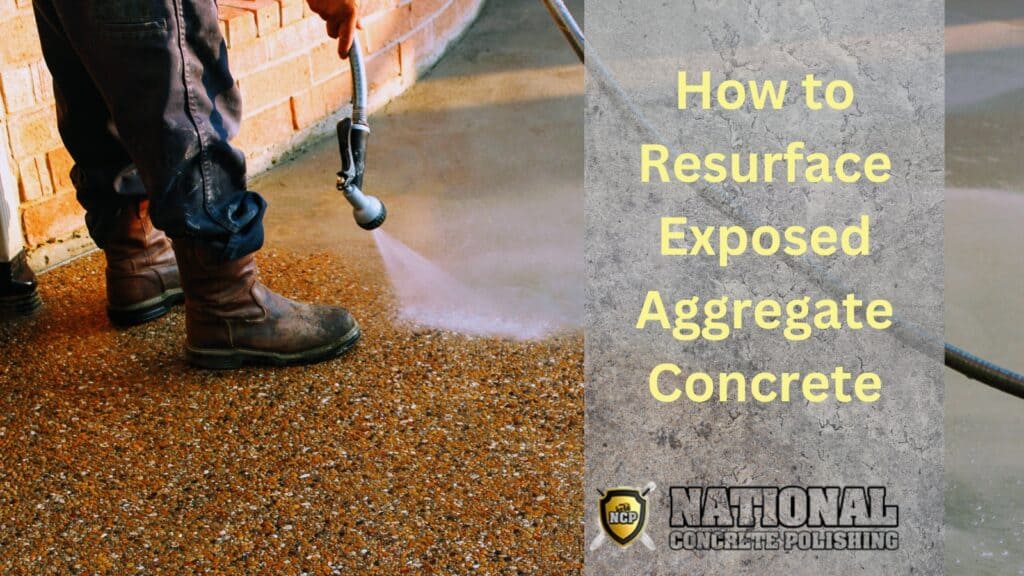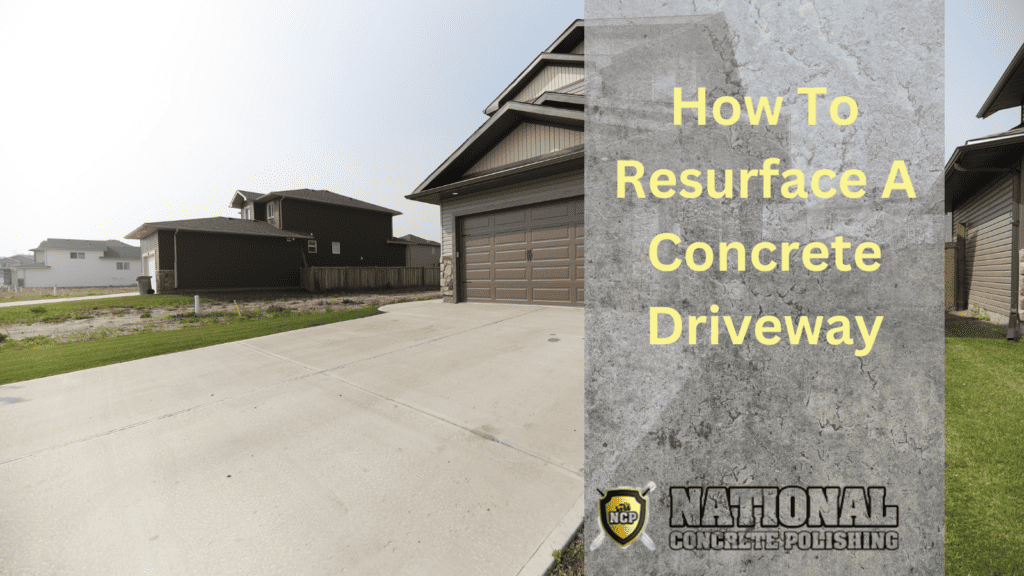Concrete has long been revered for its durability, functionality, and versatility in construction, finding its place in everything from skyscrapers to simple home patios. But even concrete, with all its strength, can show signs of wear and tear over time. Cracks, discoloration, and surface degradation aren’t just aesthetically displeasing; they can also pose a safety hazard and decrease your property’s value. This is where the magic of concrete resurfacing comes in.
In this blog post, we’ll dive deep into the world of concrete resurfacing. You’ll learn what concrete resurfacing is, how it works, the processes involved, and why it could be a valuable option for maintaining the beauty and longevity of your concrete surfaces. We’ll also compare the techniques used in professional resurfacing and DIY resurfacing, so you can make an informed decision based on your needs.
So, whether you’re looking to spruce up your driveway, garage floor, patio, or commercial space, you’ve come to the right place. Stay with us as we embark on a comprehensive guide to concrete resurfacing brought to you by the experts at National Concrete Polishing.
What is Concrete Resurfacing?
Concrete resurfacing is a process that involves the application of a new surface layer over existing concrete. This process is designed to repair cracks, improve appearance, and extend the life of your concrete surfaces, giving them a fresh, new look without the need for a complete replacement. The goal of concrete resurfacing is to restore the aesthetic and functional aspects of the original concrete, making it as good as new, or in many cases, even better.
Often confused with concrete repair, concrete resurfacing is distinct in its approach and results. Concrete repair generally addresses localized damage by filling in cracks or holes. It’s a patchwork solution that doesn’t necessarily improve the overall appearance or longevity of the concrete. On the other hand, concrete resurfacing is a comprehensive process that rejuvenates the entire surface area, rectifying existing issues and preventing further damage.
Consider it the cosmetic surgery of the concrete world. While addressing functional issues like cracks or erosion, it also significantly improves the concrete’s aesthetic appeal. By using decorative overlays or stamped concrete techniques (which we’ll explore in more detail later), concrete resurfacing can dramatically transform the appearance of your space, adding considerable value to your property.
At the heart of concrete resurfacing is the objective of concrete restoration. With time, concrete surfaces inevitably degrade due to weather conditions, heavy usage, and other factors. Concrete resurfacing is a process that restores these surfaces to their original state or even enhances them, ensuring they serve their purpose beautifully for many more years to come.
In the upcoming sections, we will dive deeper into the process and techniques involved in concrete resurfacing, as well as explore the benefits it offers.
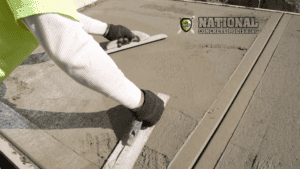
The Concrete Resurfacing Process
Concrete resurfacing, while seemingly straightforward, is a meticulous process that requires expertise and precision. It begins with surface preparation, an essential step that ensures the longevity and effectiveness of the resurfacing. The existing concrete surface is thoroughly cleaned, removing any debris, oils, or stains. Cracks and holes are then filled and repaired to create a smooth, solid base. In some cases, the surface may be etched with acid or mechanically abraded to provide a better bond.
Once the surface is prepped, the concrete overlay is applied. This is a specially formulated compound that is spread over the existing concrete. It can be applied by different means, including troweling or spraying, and in various thicknesses, depending on the condition of the original concrete and the desired results.
The final step is the refinishing, where the new surface is smoothed, textured, or patterned as per the client’s preference. This is also the stage where decorative techniques, such as stamping or staining, can be applied. Once complete, the resurfaced concrete is left to cure for a prescribed period before it can be used. By the end of this process, what was once old, dull, or damaged concrete is transformed into a rejuvenated, aesthetically pleasing, and durable surface.
Techniques Used in Concrete Resurfacing
A myriad of techniques can be employed in concrete resurfacing, each offering a unique look and feel to match your aesthetic preferences and functional needs.
One common technique is the use of stamped concrete. This process involves stamping the freshly applied overlay with patterns or textures before it fully dries. This can mimic the appearance of brick, stone, wood, or other natural materials, providing a high-end look at a fraction of the cost.
Decorative concrete is another popular method, allowing for the incorporation of a range of colors, textures, and designs into the resurfacing process. This might involve adding color to the overlay mix or applying stains, dyes, or color hardeners after the overlay is in place.
The chosen technique often depends on the desired look, the condition of the existing concrete, and the specific use of the area. Whether you desire a natural stone appearance for your patio, a sleek and polished look for your commercial space, or a colorful, fun design for a playground, concrete resurfacing techniques can accommodate a wide variety of styles.
In the next section, we’ll explore the products used in the resurfacing process and how they contribute to a successful concrete resurfacing project.
Products Used in Concrete Resurfacing
A successful concrete resurfacing job relies on quality products designed specifically for the task. Two primary components used in this process are the concrete overlay mix and coatings.
The concrete overlay mix is a blend of cement, sand, polymer resins, and other additives. This blend is what gives the resurfaced layer its strength, durability, and adherence to the old concrete. The mixes may vary depending on the specific job requirements, such as desired thickness or resistance to specific environmental conditions.
After the overlay, coatings like epoxy or acrylic may be applied to provide additional protection and aesthetic enhancement to the surface. Epoxy coatings, in particular, are highly durable and can give the surface a glossy finish. They also provide a level of resistance to chemical spills, making them an excellent choice for commercial or industrial spaces.
For color and design, stains and dyes may be used. They penetrate the concrete, giving it long-lasting color that won’t fade or peel. They are available in a wide range of colors, allowing for creative and personalized design options.
Choosing the right products and knowing how to apply them properly is crucial to achieving a successful, long-lasting, and beautiful resurfaced concrete surface. As we move forward, we will compare professional and DIY resurfacing to help you understand which option suits your needs best.
Professional vs. DIY Resurfacing
Deciding between professional and DIY concrete resurfacing comes down to several factors, including the scope of the project, your budget, and your skill level.
DIY resurfacing can be a cost-effective solution for minor repairs or for those who have some experience with concrete work. With the right tools, products, and a solid understanding of the process, homeowners can rejuvenate small areas such as a patio or a walkway.
However, DIY does have its limitations. The range of products available for DIY is often not as extensive or specialized as those professionals use. Plus, mistakes in application can lead to an unsatisfactory finish or durability issues down the line.
Professional resurfacing, on the other hand, offers a higher level of expertise and quality. Experienced professionals, like our team at National Concrete Polishing, have access to specialized products and techniques. They can handle larger scale projects, provide a wider variety of finish options, and navigate any complications that may arise during the process.
While professional services come at a higher cost compared to DIY, the value of a well-executed, durable, and aesthetically pleasing finish can significantly offset this expense. In our next section, we’ll delve into the many benefits that concrete resurfacing offers, both functionally and aesthetically.
The Benefits of Concrete Resurfacing
Concrete resurfacing comes with a plethora of benefits that make it a compelling option for anyone looking to revamp their concrete surfaces.
Firstly, it greatly enhances the durability of your concrete. Resurfacing fortifies the existing surface, helping it resist wear, tear, and weather damage, thus extending its lifespan.
Next, it provides cost-effective solutions for maintaining your concrete surfaces. Rather than bearing the expense and inconvenience of completely tearing out and replacing old, damaged concrete, resurfacing provides an economical way to restore functionality and beauty to your surfaces.
Aesthetically, concrete resurfacing has the power to transform. With a range of decorative concrete options available, your concrete surface can be upgraded to mimic the look of more expensive materials like stone, brick, or marble. This not only enhances the visual appeal of your space but can also increase the overall value of your property.
The Lasting Impact of Concrete Resurfacing by National Concrete Polishing
Concrete resurfacing offers a perfect blend of practicality, durability, and aesthetics. By restoring and enhancing existing concrete surfaces, this process breathes new life into your space, whether it’s a driveway, a commercial floor, or a patio. It offers a cost-effective, creative, and long-lasting solution to common concrete issues.
We hope this comprehensive guide gives you a deeper understanding of what concrete resurfacing is, how it works, and why it could be a valuable option for you. At National Concrete Polishing, we’re proud to provide top-tier professional concrete resurfacing services, using the best products and techniques in the industry. We aim to deliver results that not only meet but exceed your expectations.
If you have any questions or are considering concrete resurfacing for your property, don’t hesitate to reach out to our team. We’re here to guide you every step of the way, from consultation to completion, ensuring you receive the best service possible. Transform your space today with National Concrete Polishing!
Share This Post

